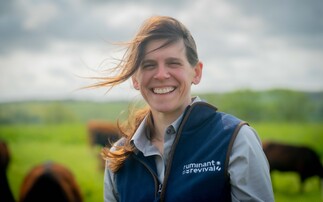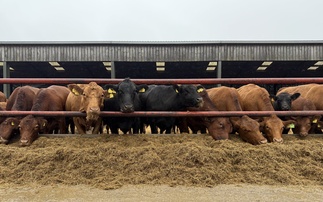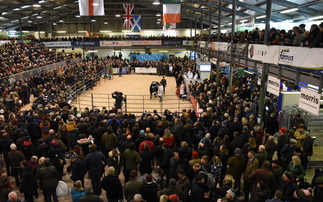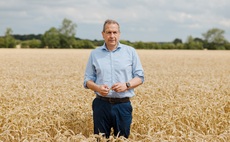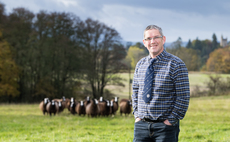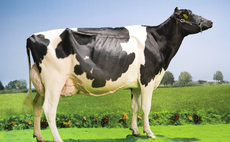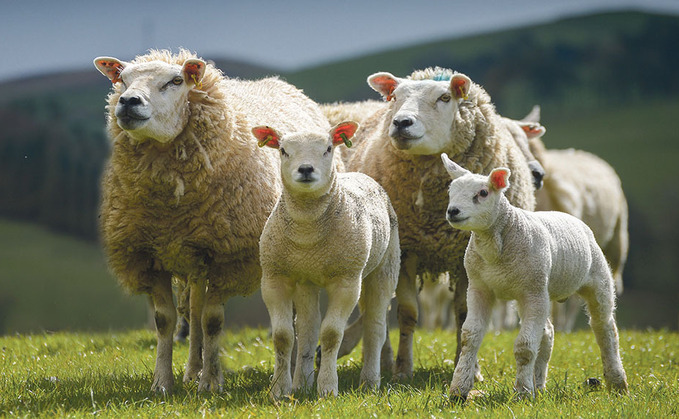
Putting research into practice, meeting net zero targets and the future of the industry were high on the agenda at the Sheep Breeders Round Table, held at the Radisson Blu Hotel, Castle Donington.
Improving efficiency is the most obvious way to reduce the sheep industry’s carbon footprint, according to Phil Bicknell, CIEL head of business development, speaking about agriculture’s net zero challenge.
He said: “The supply chain has to work together to reduce emissions. What we do not want is to is to be in a situation where regulation is introduced which results in having to reduce livestock numbers.”
Changes
He explained that changes in supplementary feeding, such as using low crude protein, higher starch diets and increasing fat and oil content in diets, as well as the use of specialised ingredients/additives, have been shown to reduce methane emissions, along with improved forage quality and using grass/legume mixtures and multi-species swards.
However, improving health and reducing waste, for example, by having lower lamb mortality, will have a big impact.
He said: “It is important to measure what you do to be able to identify areas for action and this does not just apply to carbon, but to all other areas of your business.”
He also stressed the importance of continuous genetic improvement in delivering a long-term reduction in emissions.
This theme was continued by Dr Tim Byrne, AbacusBio, who explained that genetic improvement in a population is both permanent and cumulative.
Targeting
He said that targeting multiple economic, environmental or other traits at the same time would lead to both a reduction in greenhouse gas emissions (GHG) and increased profit, with genomic technology increasing the speed even further.
In terms of profit, he said: “The trend in genetic improvement from 2015-2020 has been worth 2.1 million per year to the sheep industry. If it continued at this rate over the next 10 years, this cumulative and permanent gain would be worth 14.7m/year.”
Additionally, if GHG emissions decreased by 0.1 per cent/ewe/year – starting from a base of 506CO2e/ewe/year – industry-wide, this would be a reduction of 6,618 tonnes/year.
Taking into account the permanent and cumulative effect of this, emissions from the sheep sector in 10 years will be 1 per cent lower per year.
Dr Byrne said: “This demonstrates the power of genetics, even if the trends remain at current levels, but there is the potential to do much more. Focusing on core traits such as lamb survival and ewe longevity, all add value, in addition to other traits, such as feed efficiency.
“Capturing all future benefits will require further investment in genetic improvement technology and systems, but crucially the uptake of genetic improvement services by breeders, who must increase selection intensity.
“That is, select elite individuals as parents and there must be a clear demonstration of the value of improving genetics to commercial farmers.”

Outlining the characteristics of the sheep of the future
The characteristics required for the sheep of the future and how to get improved genetics adopted more widely were the subject of a panel discussion.
Dr Janet Roden, Innovis, said sheep must be fit for purpose to convert grass to protein without the use of cereals, particularly in areas of the UK which cannot grow other proteins, but most ewes are currently too big and, therefore, too hungry and we have to think about a 55-65kg ewe.
Tim White, Exlana sheep breeder, said producers need to think about the public’s expectation on welfare. For example, while 15 per cent lamb mortality might be acceptable to a farmer, it looks bad from an outside perspective.
Routine
Another aspect is routine procedures such as castration and docking, which are also open to attack.
On meat quality, Mr White said: “Concentrating on growth is good for the farmers but we are not putting work into taste, texture and intra-muscular fat. Lamb is an expensive protein and we need to address this and improve the product in the long-term.
Other opinions from delegates suggested costs had to be stripped out of production systems, with farmers needing low-cost sheep, smaller ewes which lived longer and lambed easily outdoors with lambs finished off grass.
Uptake
The panel agreed the key to driving uptake in using improved genetics was getting commercial farmers to see the benefits and that farmers need to be ‘selling genetic progress’.
It was suggested that the way genetic data is currently presented is too complicated and difficult to understand and should be simplified so that industry standards, such as the Profitable Lifetime Index in dairy, were needed.
However, it was thought the loss of the Basic Payment Scheme and rising costs may lead to more focus on efficiency and that young people coming into the industry were likely to be more open to the use of technology and data.
Accounting for the dynamics of the global lamb market
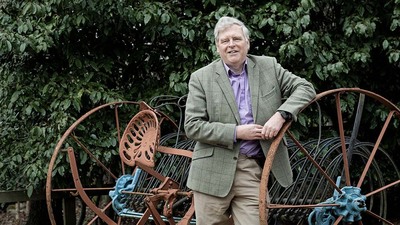
Most of the factors which affect lamb prices are out of control of the industry, independent adviser Stuart Ashworth told the event.
“To drive businesses forward, we need to work collectively with the organisations which try to inform consumers and governments on the challenges we are facing,” he said.
Markets
He explained that a third of sheepmeat produced in the UK was exported and that a third of all sheepmeat consumed in the UK was imported, whereas 90 per cent of all sheepmeat produced in New Zealand was exported.
He said: “Most UK exports are fresh meat to the EU. Different products have different values, with fresh 25 per cent more expensive than frozen. Australia and New Zealand prices are driven by export trade, which is for both fresh and frozen product.
“Trade flow is very much influenced by politics, such as free trade agreements. Since Brexit, the compliance costs, such as export certificates and approvals, have added about 8 per cent to cost of exporting lamb to the EU.
“Exchange rates also affect market prices but geopolitics is the biggest market disrupter medium-term.
“For example, if China has an issue with a country such as Australia and decides not to take any lamb, then that produce will be diverted elsewhere, affecting their prices.”
In terms of production in other parts of the world, Mr Ashworth, said it was stable in the EU but there was growth in sheep numbers in Ireland.
Production
He is not expecting production to increase in New Zealand where numbers may even fall due to climate change regulations, nor in Australia, where numbers ebb and flow due to the extremes of weather affecting production.
Closer to home, Mr Ashworth said consumer behaviour will have an increasing impact on trade, with the rising cost of living, the availability of cheaper proteins and more flexitarian diets.
He said: “Lamb is expensive, more so than chicken, beef and pork and tends to be bought by older people.
“There is a preconception about lamb, often with bone being seen as waste, so there is the opportunity for more product development and better presentation.”
Mr Ashworth also suggested there is a potentially controversial argument, which would go against some efficiency targets, for increasing carcase size to justify boning out, so allowing butchers to use different skills.
He said: “How to get younger consumers to try modern lamb is a challenge. We need to get messaging right around animal health, welfare, sustainability and the environment.
“We need to present a holistic view of the industry, not just focusing on emission reduction, but extend the debate to the fact that grain which can be used to feed people is not needed to produce lamb, but sheep eat grass which people cannot use and that they also make a huge contribution to maintaining the UK landscape.”






